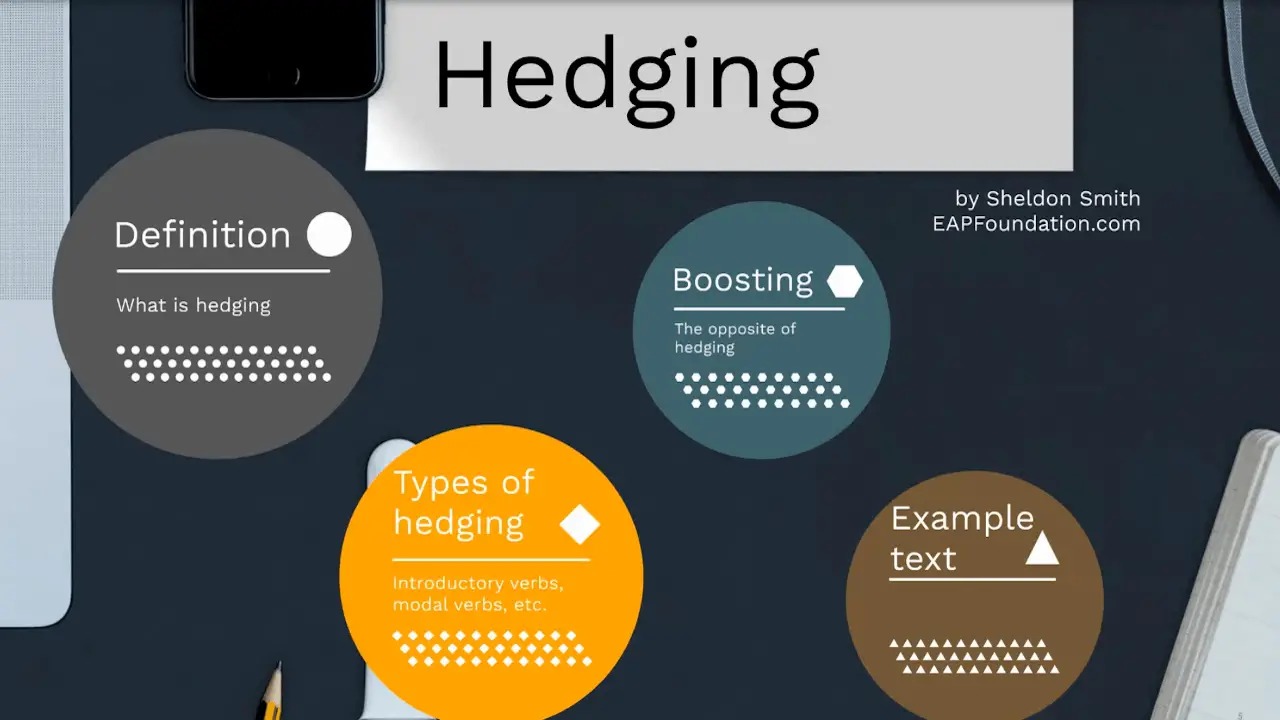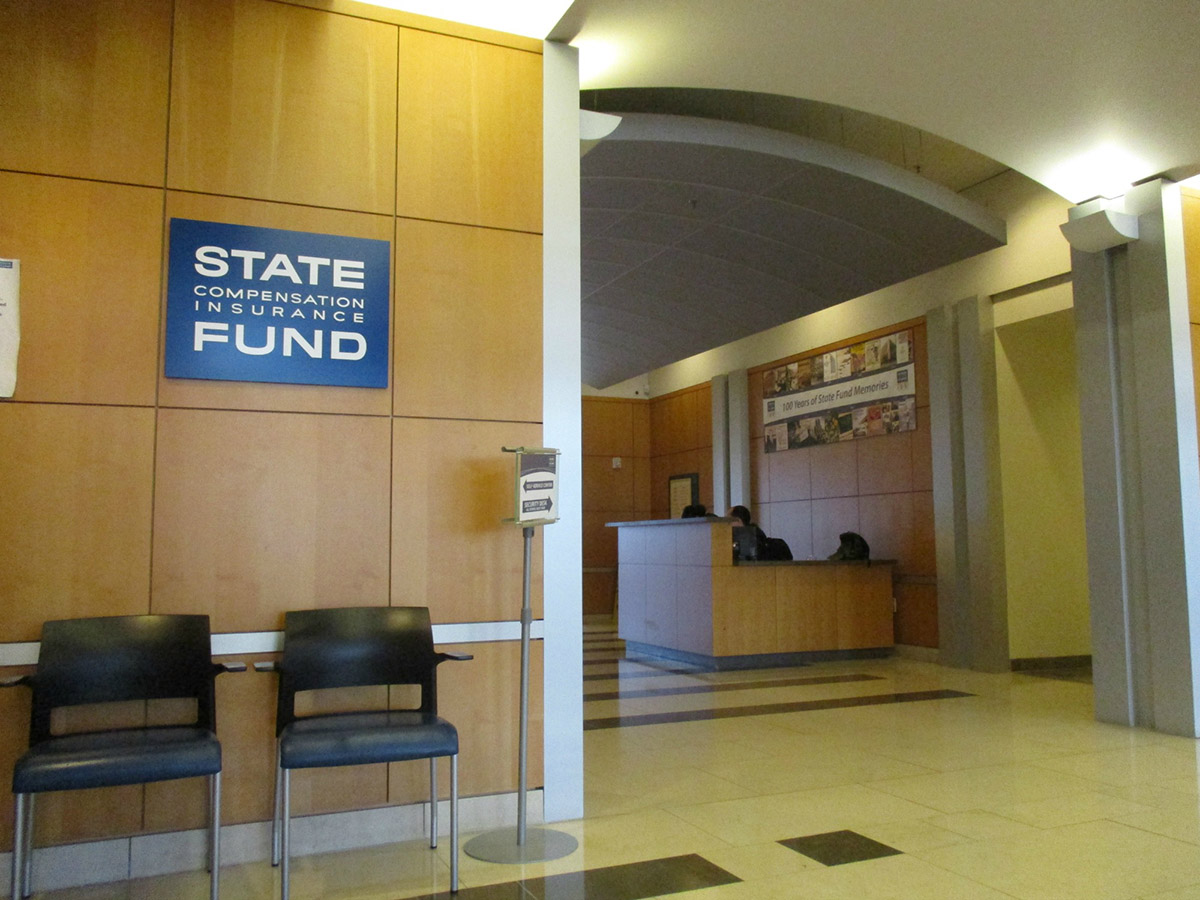Home>Finance>Why Is Financial Literacy Important For Students


Finance
Why Is Financial Literacy Important For Students
Published: December 23, 2023
Discover the significance of financial literacy for students and how it empowers them to navigate the world of finance effectively. Enhance their knowledge and skills in handling personal finances with our comprehensive finance education resources.
(Many of the links in this article redirect to a specific reviewed product. Your purchase of these products through affiliate links helps to generate commission for LiveWell, at no extra cost. Learn more)
Table of Contents
- Introduction
- Definition of Financial Literacy
- The Importance of Financial Literacy for Students
- Benefits of Financial Literacy for Students
- Impacts of Financial Illiteracy on Students
- Strategies for Improving Financial Literacy among Students
- Incorporating Financial Literacy Education in the Curriculum
- The Role of Parents and Teachers in Promoting Financial Literacy
- Tools and Resources for Enhancing Financial Literacy among Students
- Conclusion
Introduction
Financial literacy is the knowledge and understanding of financial concepts and principles that help individuals make informed decisions regarding their money. It is a crucial skill that everyone needs in order to navigate the complexities of personal finance and achieve financial well-being.
For students, financial literacy is especially important as they transition into adulthood and become responsible for managing their own finances. With the ever-increasing cost of living, student loans, and the complexities of the modern financial landscape, it is essential for students to be equipped with the necessary knowledge and skills to make informed financial decisions.
Unfortunately, studies have shown that many students lack basic financial literacy. A survey by the National Foundation for Credit Counseling found that only 24% of millennials demonstrated basic financial knowledge. This lack of understanding can have serious consequences, leading to poor financial choices, mounting debt, and a lifetime of financial struggles.
In this article, we will explore why financial literacy is important for students and the benefits it brings. We will also look at the impacts of financial illiteracy on students and discuss strategies for improving financial literacy among this demographic. Furthermore, we will delve into the role of parents and teachers in promoting financial literacy and highlight tools and resources that can be utilized to enhance financial knowledge.
By the end of this article, readers will have a clear understanding of the importance of financial literacy for students and the steps that can be taken to ensure they are equipped with the necessary skills to make sound financial decisions throughout their lives.
Definition of Financial Literacy
Financial literacy refers to the ability to understand and effectively use various financial skills, including personal budgeting, saving, investing, and managing debt. It involves having the knowledge and confidence to make informed financial decisions that align with one’s financial goals and values.
A financially literate individual possesses a solid foundation of financial knowledge, understanding key concepts such as interest rates, credit scores, taxes, and investments. They are aware of the risks and rewards associated with different financial products and are capable of evaluating and comparing options to determine the best course of action.
Financial literacy goes beyond simply understanding the mechanics of money; it also encompasses the development of important financial habits and behaviors. This includes skills such as setting financial goals, creating and sticking to a budget, practicing responsible borrowing, and developing a long-term savings plan.
Being financially literate empowers individuals to take control of their financial lives, navigate financial challenges, and strive towards financial security and independence. It promotes financial well-being, allowing individuals to effectively manage their income, make informed decisions about spending and saving, and plan for their future financial goals.
It is essential to note that financial literacy is not a one-time accomplishment but a lifelong journey. The financial landscape is ever-evolving, and individuals need to continuously update their knowledge and skills to adapt to changing economic circumstances and new financial products or services.
Financial literacy is not just about the individual but also has broader societal implications. When individuals possess strong financial literacy skills, it can contribute to the economic growth and stability of a nation. It can lead to higher levels of financial inclusion, reduced poverty rates, and increased overall financial well-being.
With a clear understanding of what financial literacy entails, we can now explore why it is particularly vital for students as they embark on their path to financial independence and adulthood.
The Importance of Financial Literacy for Students
Financial literacy is crucial for students as they navigate the transition from adolescence to adulthood. By equipping students with the necessary knowledge and skills to make informed financial decisions, we can empower them to build a strong foundation for their financial future. Here are several reasons why financial literacy is important for students:
1. Financial Independence: Financial literacy enables students to become financially independent. It equips them with the knowledge to manage their own finances, make wise financial choices, and avoid falling into debt traps. By understanding concepts like budgeting and saving, students are better prepared to handle their income, expenses, and financial goals.
2. Improved Financial Well-being: Students who are financially literate are more likely to experience greater financial well-being. They are better equipped to handle unexpected expenses, manage debt responsibly, and plan for the future. Financially literate students are more likely to build emergency funds, invest wisely, and achieve their financial goals.
3. Avoidance of Costly Mistakes: Financial illiteracy can lead to costly mistakes, such as falling into credit card debt, taking out high-interest loans, or making poor investment choices. By educating students about financial concepts, they are more likely to avoid these pitfalls and make informed decisions that align with their long-term financial goals.
4. Entrepreneurial Skills: Financial literacy goes hand in hand with entrepreneurial skills. Students who understand financial concepts are better positioned to become successful entrepreneurs. They can effectively manage cash flow, analyze financial statements, and make strategic business decisions.
5. Preparedness for Adulthood: As students transition into adulthood, they will face numerous financial responsibilities, such as managing rent, utilities, student loan repayments, and insurance. Financial literacy equips students with the skills to handle these challenges, ensuring a smooth transition into independent living.
6. Empowerment and Confidence: Financial literacy empowers students to take control of their financial future. They gain confidence in managing their money, making financial decisions, and planning for their goals. This sense of empowerment allows students to proactively shape their financial lives and build a solid financial foundation.
7. Long-term Financial Security: Financial literacy lays the groundwork for long-term financial security. By learning about investing, retirement planning, and financial strategies, students can set themselves up for a comfortable future. They can maximize their income, grow their savings, and achieve financial freedom.
Given the importance of financial literacy for students, it is necessary to explore the benefits that this knowledge can bring to their lives. In the next section, we will delve into the specific advantages that students gain when they possess financial literacy skills.
Benefits of Financial Literacy for Students
Financial literacy has numerous benefits for students as they navigate the complex world of personal finance. By acquiring financial literacy skills, students can experience the following advantages:
1. Responsible Financial Decision Making: Financially literate students are equipped with the knowledge and skills to make informed financial decisions. They can analyze financial options, evaluate risks and rewards, and choose the best course of action. This leads to responsible financial decision-making, ensuring they make choices that align with their long-term goals.
2. Improved Money Management: With financial literacy, students gain vital money management skills. They learn to create budgets, track expenses, and prioritize spending. This enables them to better manage their income, avoid overspending, and develop healthy financial habits.
3. Debt Management: Financial literacy equips students with the tools to manage debt effectively. They learn about interest rates, repayment strategies, and the impact of borrowing on their overall financial health. This knowledge helps them make smarter borrowing decisions, avoid excessive debt, and reduce financial stress.
4. Financial Planning: Students who are financially literate develop the ability to plan for their financial future. They learn about setting financial goals, implementing saving strategies, and making long-term financial plans. They can envision their financial milestones and take the necessary steps to achieve them.
5. Building Wealth: Financial literacy empowers students to build wealth over time. They understand the importance of saving and investing early, and they can make informed decisions when it comes to growing their wealth. With compound interest and long-term investment strategies, financially literate students can build a solid financial foundation for their future.
6. Financial Security: By possessing financial literacy skills, students can enhance their financial security. They understand the importance of emergency funds, insurance coverage, and risk management. They can plan for unexpected financial events and protect themselves against potential financial setbacks.
7. Entrepreneurial Opportunities: Financial literacy opens doors to entrepreneurial opportunities for students. They can apply their knowledge of financial concepts to establish and manage their own businesses. They can understand profit and loss statements, create business budgets, and make financially sound decisions for their ventures.
Overall, financial literacy provides students with the tools and knowledge to make sound financial choices, plan for their future, and achieve financial independence. It sets them on a path towards long-term financial success and allows them to navigate the complexities of the modern financial landscape with confidence.
Impacts of Financial Illiteracy on Students
The consequences of financial illiteracy among students can be significant and long-lasting. Without a solid understanding of personal finance, students may face various negative impacts. Here are some of the key effects of financial illiteracy on students:
1. High Levels of Debt: Financially illiterate students may find themselves accumulating high levels of debt. Without understanding interest rates, borrowing terms, and the consequences of overspending, they may rely heavily on credit cards and loans, leading to a cycle of debt that can be difficult to break free from.
2. Lack of Savings: Financial illiteracy often results in a lack of savings. Students may struggle to prioritize saving money, not fully comprehending the importance of building an emergency fund or saving for future expenses. This lack of savings can leave them vulnerable to financial emergencies and limits their ability to achieve financial goals.
3. Poor Financial Decision Making: Without the knowledge and skills to make informed financial choices, financially illiterate students may find themselves making poor decisions. They may fall victim to payday loans, high-interest credit cards, or other financial schemes that can lead to long-term financial hardships.
4. Limited Opportunities: Financial illiteracy can limit students’ opportunities in terms of education and career advancement. Students who are burdened with financial struggles may struggle to pursue higher education or may be forced to settle for job opportunities that provide immediate financial relief, rather than pursuing their true passions or long-term career goals.
5. Increased Stress and Anxiety: Financial worries can greatly impact students’ mental health. The stress and anxiety that arise from financial difficulties can affect their overall well-being, academic performance, and personal relationships. Financial illiteracy can contribute to a cycle of stress and worry that hinders students’ ability to fully focus on their studies and other important aspects of their lives.
6. Limited Financial Independence: Financially illiterate students may rely on others for financial support and guidance. They may struggle to manage their own finances and make independent financial decisions. This lack of financial independence can affect their confidence and hinder their ability to establish a stable and successful financial future.
7. Inadequate Retirement Planning: Failure to understand the importance of retirement planning can leave financially illiterate students unprepared for their future. Without knowledge of investment strategies, retirement accounts, and long-term financial planning, they may face significant challenges in achieving a financially secure retirement.
By understanding the impacts of financial illiteracy on students, we can recognize the importance of equipping them with the necessary financial knowledge and skills to navigate the challenges they may face in their financial lives.
Strategies for Improving Financial Literacy among Students
To address the concerning levels of financial illiteracy among students, it is crucial to implement effective strategies that promote financial education and empower them with the necessary skills to navigate their financial lives. Here are several strategies for improving financial literacy among students:
1. Early Financial Education: Start financial education at a young age to lay a strong foundation. Introduce basic financial concepts and principles in primary and middle schools, gradually building upon them as students progress through their education. This early exposure helps instill good financial habits and develops a lifelong interest in personal finance.
2. Practical and Interactive Learning: Incorporate practical and interactive learning activities to engage students in real-life financial scenarios. This can include budgeting simulations, investment games, and hands-on experiences that simulate financial decision-making. Practical application enhances understanding and retention of financial concepts.
3. Personal Finance Courses: Offer personal finance courses as part of the curriculum, either as stand-alone courses or integrated within other subjects. These courses can cover topics such as budgeting, saving, investing, credit management, and retirement planning. Having dedicated courses ensures comprehensive coverage of essential financial knowledge.
4. Engage with Technology: Utilize technology to engage students in learning and managing their finances. Online financial literacy platforms, mobile apps, and interactive tools can provide interactive lessons, budgeting tools, and resources to help students track their expenses, set financial goals, and monitor their progress.
5. Guest Speakers and Workshops: Invite finance professionals, bankers, and financial advisors to give guest lectures and workshops. They can share real-life experiences, provide insights into financial practices, and offer guidance on building a solid financial foundation. This interaction exposes students to diverse perspectives and valuable advice.
6. Peer-to-Peer Learning: Encourage peer-to-peer learning by promoting student-led financial literacy clubs or organizations. Students can share their experiences, exchange financial tips, and support one another in their financial journey. Peer mentorship fosters a sense of community and creates a supportive environment for learning.
7. Community Partnerships: Collaborate with community organizations, financial institutions, and local businesses to provide workshops, internships, and mentorship programs. These partnerships can offer students practical exposure to financial management, entrepreneurship, and career opportunities in the financial industry.
8. Parental Involvement: Educate parents about the importance of financial literacy and provide resources to support their children’s financial education at home. Encourage open conversations about money, budgeting, and saving within families. Parental involvement reinforces financial literacy lessons learned in school and helps students develop healthy financial habits.
9. Continuous Learning Opportunities: Promote a culture of continuous financial learning among students. Encourage them to seek out additional resources, online courses, books, and workshops to further enhance their financial knowledge and skills. Emphasize the importance of staying informed and adaptable in the ever-changing financial landscape.
By implementing these strategies, we can equip students with the necessary financial literacy skills to make informed decisions, navigate financial challenges, and build a strong foundation for their future financial success.
Incorporating Financial Literacy Education in the Curriculum
In order to effectively promote financial literacy among students, it is essential to incorporate financial education in the curriculum. By integrating financial literacy into the regular coursework, students can receive a comprehensive education in personal finance. Here are some key considerations when incorporating financial literacy education into the curriculum:
1. Identify Core Financial Literacy Concepts: Determine the core financial literacy concepts that should be included in the curriculum. This can include topics such as budgeting, saving, investing, credit management, taxes, insurance, and retirement planning. Tailor the curriculum to address the specific needs and realities of the students.
2. Age-Appropriate Curriculum: Develop a curriculum that considers the different age groups and grade levels. Adapt the complexity and depth of the financial concepts based on the students’ cognitive abilities and development stage. Start with basic concepts in primary school and gradually introduce more advanced topics in higher grades.
3. Integration with Other Subjects: Integrate financial literacy topics into existing subjects such as math, economics, social studies, and business studies. This cross-curricular approach helps students make connections between financial concepts and real-life situations. For example, use math lessons to teach compound interest or use social studies to discuss economic systems.
4. Hands-on Learning Activities: Include hands-on learning activities and simulations that allow students to apply financial concepts in practical ways. This can involve budgeting exercises, investing simulations, financial decision-making scenarios, and case studies. Practical application enhances understanding and develops critical thinking skills.
5. Guest Speakers and Industry Partnerships: Invite guest speakers from financial institutions, businesses, or community organizations to share their expertise and experiences. Foster partnerships with these entities to provide real-world insights, internship opportunities, and mentorship programs. These connections offer students valuable perspectives and exposure to real-life financial scenarios.
6. Utilize Online Resources: Leverage online resources, interactive websites, and educational apps that engage students in financial learning. Online platforms can provide engaging content, quizzes, financial calculators, and interactive lessons. These resources can support classroom learning and provide additional avenues for students to explore financial concepts independently.
7. Continuing Education and Professional Development: Provide professional development opportunities for teachers to enhance their own financial literacy knowledge and teaching skills. Offer workshops, training sessions, and access to resources that enable teachers to effectively deliver financial literacy education to students.
8. Assessment and Evaluation: Implement robust assessment methods to measure students’ progress and understanding of financial literacy concepts. This can include quizzes, projects, presentations, and real-life financial simulations. Regular assessment ensures that students are grasping the fundamental concepts and building the necessary skills for financial decision-making.
Incorporating financial literacy education into the curriculum ensures that all students have equal access to vital financial knowledge and skills. By integrating financial education throughout their academic journey, students will be equipped with the tools and understanding needed to navigate their financial lives successfully.
The Role of Parents and Teachers in Promoting Financial Literacy
Parents and teachers play a crucial role in promoting financial literacy among students. By working together, they can create a supportive environment that fosters financial understanding and empowers students to make informed financial decisions. Here are the key roles parents and teachers can play in promoting financial literacy:
1. Modeling Financial Responsibility: Parents and teachers should model responsible financial behavior. Demonstrating good financial habits such as budgeting, saving, and avoiding unnecessary debt sets a positive example for students. Leading by example helps students understand the importance of financial responsibility and encourages them to adopt similar behaviors.
2. Open Communication: Encourage open and honest communication about financial matters between parents, teachers, and students. Create a safe space where students can ask questions, seek advice, and share their financial concerns. Open dialogue promotes a deeper understanding of financial concepts and allows for personalized guidance.
3. Financial Education at Home: Parents can supplement school-based financial education by incorporating financial lessons into everyday activities at home. Involving children in budgeting, grocery shopping, and saving for goals provides hands-on learning opportunities. Parents can also share personal financial experiences and explain their decision-making processes to help children develop financial confidence.
4. Collaboration with Teachers: Teachers play a vital role in delivering financial literacy education in the classroom. They can collaborate with parents to reinforce the concepts taught at home and provide additional resources for students’ financial education. Parents and teachers can exchange information about students’ progress and work together to address any challenges or gaps in understanding.
5. Integration across Subjects: Teachers can incorporate financial topics into various subjects to enhance students’ understanding. For example, math lessons can include budgeting and financial calculations, while language arts can involve reading and analyzing financial texts. Integrating financial literacy into different subjects helps students see the relevance of financial concepts in their daily lives.
6. Real-Life Application: Both parents and teachers should focus on real-life application of financial concepts. Encourage students to apply their knowledge to real-world situations, such as budgeting a family vacation or exploring investment options. This hands-on approach reinforces learning and helps students connect financial literacy with practical decision-making.
7. Providing Resources and Tools: Parents and teachers can provide access to resources and tools that enhance students’ financial literacy. This can include recommending books, websites, and apps that offer interactive financial lessons and calculators. They can also direct students to workshops, seminars, and financial literacy programs offered in the community.
8. Continuous Support and Reinforcement: Financial literacy is an ongoing process. Parents and teachers should provide continuous support, reinforcement, and guidance throughout a student’s educational journey. Encourage students to set financial goals, regularly review their budgets, and reflect on their financial decisions. This ongoing support ensures that financial literacy becomes a lifelong skill.
By working together, parents and teachers can create a strong foundation for students’ financial literacy. By delivering consistent messaging, providing real-life examples, and offering guidance, parents and teachers can empower students to navigate their financial futures with confidence.
Tools and Resources for Enhancing Financial Literacy among Students
There are various tools and resources available to enhance financial literacy among students. These resources provide valuable information, interactive learning experiences, and practical tools to help students develop crucial financial skills. Here are some key tools and resources for enhancing financial literacy among students:
1. Online Educational Platforms: Online platforms dedicated to financial education offer interactive lessons, tutorials, and quizzes. Websites like Khan Academy, Investopedia, and Practical Money Skills for Life provide comprehensive resources covering a wide range of financial topics. These platforms allow students to learn at their own pace and reinforce their understanding through interactive exercises.
2. Financial Literacy Apps: Mobile apps designed for financial literacy provide engaging and interactive learning experiences. Apps like Mint, Acorns, and MoneySmart offer budgeting tools, investment simulations, and educational resources. These apps enable students to track their expenses, set financial goals, and improve their financial decision-making skills using their smartphones.
3. Personal Finance Books: There are a plethora of personal finance books available that cater to different age groups and financial literacy levels. Books such as “Rich Dad Poor Dad” by Robert Kiyosaki, “The Total Money Makeover” by Dave Ramsey, and “I Will Teach You to Be Rich” by Ramit Sethi provide practical insights and guidance on managing money, investing, and building wealth.
4. Financial Literacy Games: Games can be an effective way to engage students in learning financial concepts. Educational games like “Money Metropolis,” “Gen i Revolution,” and “Financial Football” help students understand financial management, budgeting, and investing through simulations and challenges. These games make learning interactive and enjoyable.
5. Mock Stock Market Programs: Mock stock market programs, such as the Stock Market Game by the SIFMA Foundation, allow students to learn about investing by participating in virtual trading simulations. Students can practice making investment decisions and understand the risks and rewards associated with different investment strategies.
6. Financial Literacy Workshops and Seminars: Many organizations and financial institutions offer workshops and seminars focused on financial literacy for students. These events feature industry experts who provide valuable insights and practical advice. These workshops can cover topics such as budgeting, saving, investing, and credit management.
7. Local Community Resources: Local community organizations, libraries, and nonprofits often provide financial literacy resources and workshops for students. These resources can include financial literacy programs, one-on-one financial counseling, and access to financial literacy curriculum materials.
8. Resourceful Websites and Government Initiatives: Government initiatives like the U.S. Federal Reserve’s “Federal Reserve Education” website or the U.S. Department of the Treasury’s “MyMoney.gov” provide free resources, lesson plans, and interactive tools for students. These websites offer a wealth of information on various financial topics.
9. Financial Education Programs by Financial Institutions: Many banks and financial institutions offer financial literacy programs specifically designed for students. These programs often include financial literacy workshops, online modules, and other educational resources. Contact local banks and credit unions to inquire about available programs.
By utilizing these tools and resources, parents, teachers, and students can enhance financial literacy, promote better financial decision-making, and equip students with essential skills for managing their personal finances effectively.
Conclusion
Financial literacy is a critical skill for students as they navigate the complexities of personal finance and strive towards financial independence. It empowers students to make informed financial decisions, manage their money effectively, and plan for their future financial goals. By equipping students with financial literacy skills, we can help them avoid costly mistakes, build financial security, and achieve long-term financial well-being.
The impacts of financial illiteracy on students can be detrimental, leading to high levels of debt, limited opportunities, and increased stress. However, by incorporating financial literacy education in the curriculum, parents and teachers can play a vital role in promoting financial literacy among students.
Parents can support their children’s financial education by modeling financial responsibility, fostering open communication, and providing practical learning opportunities at home. Teachers can integrate financial literacy concepts into the curriculum, create hands-on learning experiences, and facilitate partnerships with financial institutions and community organizations.
There is also an array of tools and resources available to enhance financial literacy among students. Online platforms, mobile apps, books, games, workshops, and government initiatives provide valuable resources to engage students and reinforce their financial knowledge.
In conclusion, by prioritizing financial literacy education and fostering a collaborative approach between parents, teachers, and students, we can equip the next generation with the necessary skills and knowledge to navigate their financial lives successfully. With financial literacy as their foundation, students will be prepared to make informed decisions, achieve financial independence, and secure a brighter financial future.














